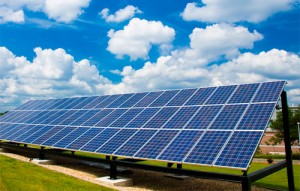National Solar Power (NSP), a market leader in utility scale solar power solutions, announced plans to construct the Southeast’s largest solar panel project, to be built in Gadsden County, Florida.
The solar panel plant is to be built on 4,000 acres of land, and the project is large enough that materials can be bought cheaply. NSP expects the $1.5 billion project to produce 400 megawatts of energy, enough to power roughly 32,000 homes.
A spokeswoman for National Solar said that the five-year construction project could provide 400 temporary jobs and 120 permanent jobs.
The decision to build the solar plant, while well received, has left some wondering, “Why here, why now, and what’s the future of solar energy in Florida looking like?”
National Solar Power CEO James Scrivener explained, “We have been impressed by all of the communities we have considered. After careful consideration, we’ve determined the Sunshine State will provide the most attractive site for our first solar project.” NSP had been considering communities in Georgia and North Carolina to host the plant, though Florida prevailed as the most ideal when considering the project’s criteria. The requirements for location included;
– Finding an ideal available site with an adequate supply of underdeveloped land that can properly meet infrastructure needs related to the establishment of the solar facility;
– Receiving appropriate business, government and community support;
– Qualifying for appropriate economic development and tax incentives;
– Access to a qualified work force.
Suzanne Grant, a utility spokesperson, has said that Progress Energy Florida (PEF), which serves central and northwest Florida, has agreed to buy an eight of the power produced from the project in Gadsden County.
Scrivener said that the project is not currently receiving any form of government subsidies, and it will not create rate hikes for utility customers because the energy can be sold at a price lower than what it would cost PEF to produce itself.
Although state legislation encouraging renewable energy production is not required for this project, Scrivener said that, “We are looking for help and support.” Increased state legislation allowing utility customers to be billed the operational and production costs would draw companies like Florida Power & Light into the mix.
Florida Power & Light (FPL) is the largest electric utility and clean energy provider in Florida, serving approximately 4.5 million customer accounts statewide. The FPL told regulators last week that it needs more natural gas to produce electricity. The two natural gas pipelines in Florida are already close to capacity, so a new one may need to be built or an existing one expanded.
Florida Power & Light has been hard hit in its recent efforts to increase energy production. Early last year, FPL suspended an estimated $10 billion in projects, including the expansion of the Turkey Point nuclear plant, the conversion of multiple oil plants to natural gas plants, and plans to reconfigure its natural gas pipeline proposal. FPL was denied a $1.27 billion base rate hike by the Public Service Commission, resulting in the halted progress and an increased need for a new energy source.
FPL has three solar plants, though the fuel savings do not currently offset the costs to customers, but they could in the future because the cost of building solar panel plants have been cut by about half. FPL said that it could move quickly on legislation to build solar plants, which could produce 500 megawatts of power, but would not do so without legislation allowing utility customers to be fully charged for the cost of the project.

